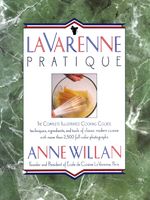Advertisement
Puréeing Vegetables
By Anne Willan
Published 1989
Vegetable purées have recently enjoyed a resurgence in popularity—one reason may be that machines can now do the work that previously took so long by hand. Most purées are made of boiled, steamed or baked vegetables that have been finely mashed or sieved and then enriched with butter and cream. The vegetables should be cooked a little longer than usual so that they are soft. Vegetables that absorb a lot of moisture, such as eggplant, should be baked rather than boiled to prevent the purée from becoming too watery. White vegetables are sometimes simmered in milk or a flour and lemon blanc to preserve their color. For serving alone, a vegetable purée should be the consistency of soft ice cream, falling easily from the spoon. Vegetables that contain little starch, such as green beans or turnips, may be mixed with potatoes, dried beans or rice to thicken them in a purée.


